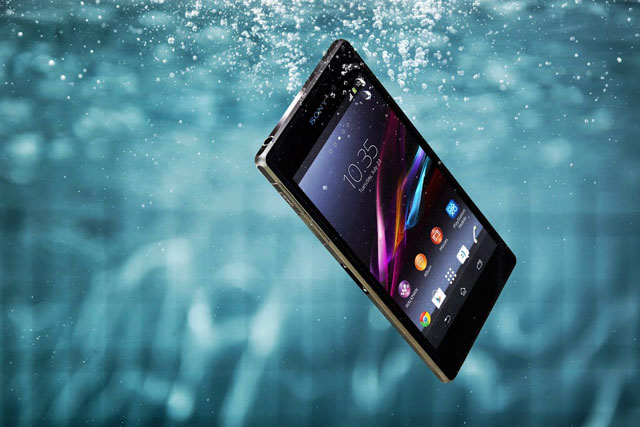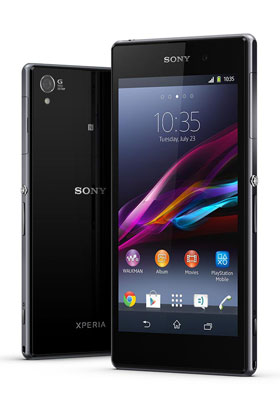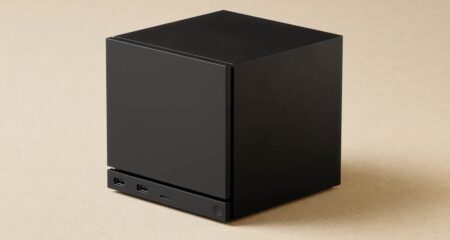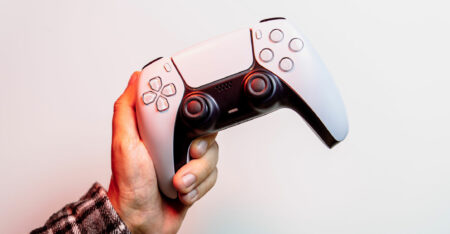
The Xperia range of smartphones and tablet computers serves as a marker of Sony’s turnaround. The Japanese electronics company has come a long way from the humdrum Android devices it produced in conjunction with Ericsson to products that now stand up to the best.
The Z1 perfectly embodies this shift, combining high-end styling and durability with innovative features and outstanding hardware, making many equivalently priced handsets from its rivals look like overpriced toys.
That said, despite its prowess in building beautiful televisions, Sony’s mobile phone displays still can’t match Samsung’s in terms of saturation and viewing angles.
At first glance, the Z1 distinctly resembles the Xperia Z that preceded it. The Z1 has the same glass front and rear, similar aluminium trim around the edges, and the same 1080p TFT 5-inch display. However, Sony’s upgraded the processor, increased the capacity of the battery and boosted the camera’s resolution — adding a welcome two-step dedicated shutter release button in the process.
 The Z is the lighter of the two devices at 146g — compared to the 170g of the Z1, but given the Z1 boasts a massive 3 000mAh battery (as opposed to the 2 330mAh one found in the Z), we’re willing to look past the extra heft.
The Z is the lighter of the two devices at 146g — compared to the 170g of the Z1, but given the Z1 boasts a massive 3 000mAh battery (as opposed to the 2 330mAh one found in the Z), we’re willing to look past the extra heft.
In addition to its huge battery, the Z1 includes Sony’s fantastic power saving “Stamina Mode” that it debuted on the Z. Users can disable mobile data and Wi-Fi when the screen is off; automatically turn off functions like Bluetooth and Wi-Fi when the battery level reaches a predefined level; or (our favourite) have Wi-Fi only turn on automatically when in range of a saved Wi-Fi network.
The Z1’s also kept the dust- and water-resistance found on its predecessor, but has thankfully dispensed with the need for a headphone jack cover. There’s still a cover over the micro USB port, which is a nuisance given how often one needs to access it.
Sony deserves credit for making the Z1 look and feel like a much higher end device than Samsung’s plastic-clad S4, but its display is more than a little disappointing by comparison. Though the Z1’s 5-inch 1080p display boasts a pixel density of 441ppi and is as sharp as you could possibly wish for, compared to the S4’s display the colours are muted and viewing angles are poor — even the slightest tilt of the device and colours are washed out and contrast vanishes.
There’s another, albeit minor, problem with the Z1. Unlike the latest Galaxy Note device from Samsung, Sony’s latest is powered by Android 4.2.2 rather than the latest 4.3. Given the quad-core 2,2GHz processor and 2GB of RAM Sony’s crammed in, one would think the company would have done its utmost to get the latest software to accompany such high-end hardware. Hopefully an update is imminent.
Like the Z, the Z1 includes 16GB of flash storage and 2GB of RAM and includes a microSD slot that supports cards up to 64GB.
From Sony’s perspective, the biggest selling point of the Z1, aside from its understated ruggedness, is its 20,7-megapixel primary camera. With a 1/2,3-inch sensor doing the light gathering duties (that’s the same size sensor as those found in most compact, point-and-shoot cameras) it handles low-light better than most cameras and is clearly trying to keep up with Nokia’s much-touted PureView technology.

Of course, full resolution images from the Sony are enormous, so by default the handset resamples them to 8-megapixels, which is still far more than most people will ever need. The accompanying camera software is well thought out and offers an excellent degree of control for those who understand settings like exposure compensation and white balance.
The Z1 also shoots great video at 1080p and 30fps and, although we found the automatic processing setting tended to over-sharpen and over-saturate images, on the whole the results were excellent (and most users won’t notice, anyway).
Ultimately, the biggest challenge facing Sony with the Z1 faces is its price. At a recommended R9 899, it’s considerably more expensive than equivalent top-end Androids and in a market as price sensitive as South Africa’s — not to mention as flooded with Samsung marketing — this could put a number of consumers off what is undoubtedly a better looking device.
Sony’s found the plot again with its smartphones, but there’s still work to be done when it comes to its displays and its pricing. The Android market is crowded and the company’s going to have to work a little harder if it wants to be more than a niche player. — (c) 2013 NewsCentral Media




